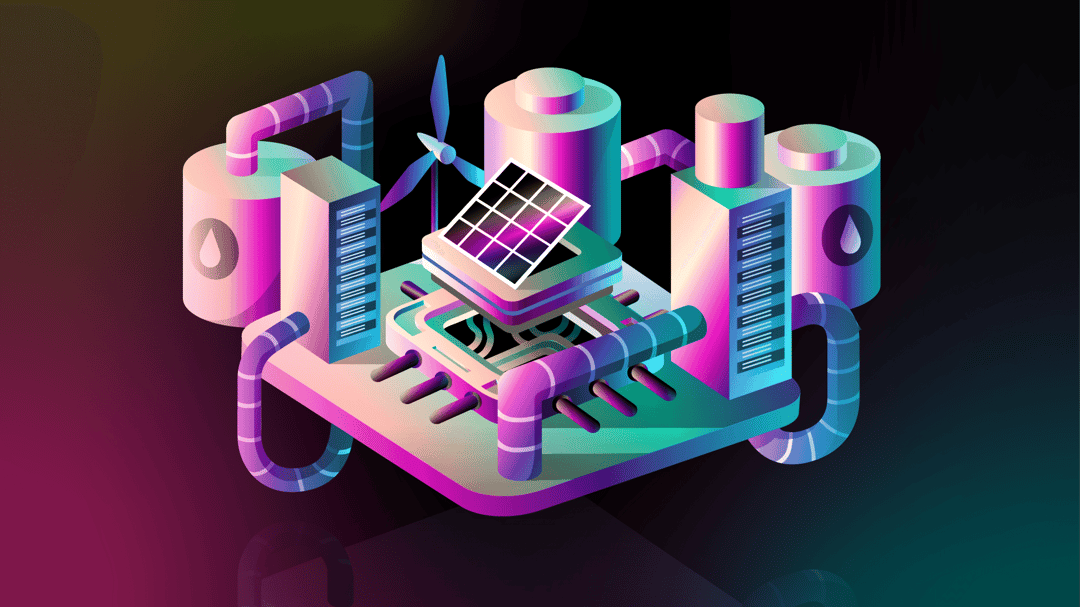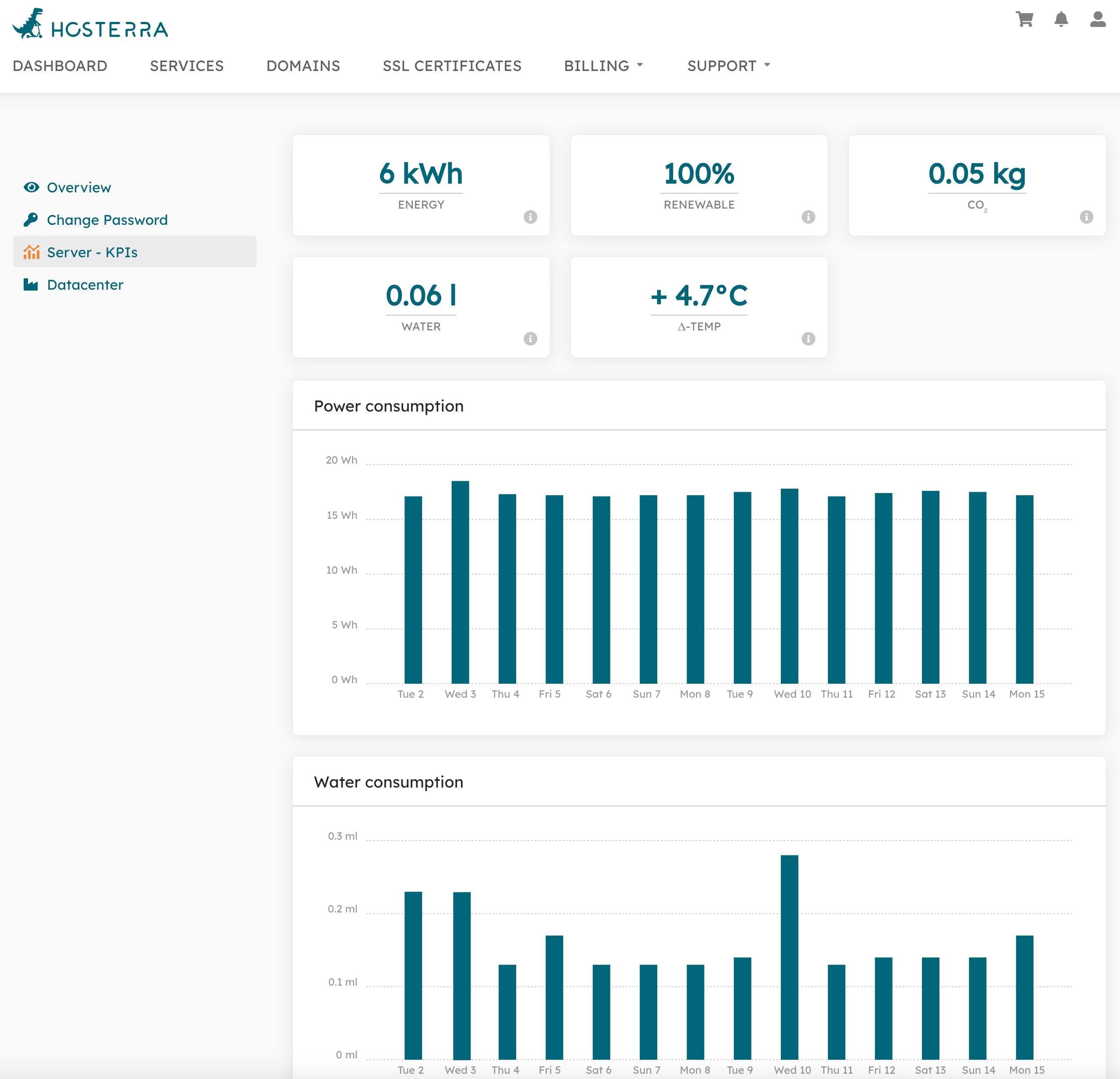
Why adopt Green IT, and how - webinar report
What is Green IT? Why does it matter today? And how can it make a difference in your organization? An expert panel replies...

Pierre Lannoy is the founder of Hosterra, a Lille-based company specializing in Green IT. He offers energy-optimized Elastic Metal servers, enabling his customers - mainly web agencies - to reduce their carbon footprint, and that of their clients. This involves detailed reporting, and reliance on DC5, Europe's most sustainable datacenter. An exemplary Scaleway customer to watch! Read on to find out why…
Pierre Lannoy: Green IT is increasingly becoming a must-have. For private sector RFPs (requests for proposals), the trend is undeniable. In the last RFP I won, Hosterra's eco-responsibility and sustainability, including in the social sense, were key criteria: 25% of the score in this case. And I’m seeing this increasingly often.
I have a real advantage in these RFPs by having most of my infrastructures with Scaleway. The infrastructures I sell to my customers are Elastic Metal; machines which really allow us to measure the power consumption of each process. And since we can measure it, we can have an impact on it (by optimizing it).
At Scaleway, it already helps me enormously to have your PUE and WUE data. But also, the fact that you make your servers last [up to ten years, versus three or four elsewhere] helps me a lot too. So I have the operational and efficiency aspect, which I share with my customers; I don’t hide from them the fact that I work with you. Finally, Scaleway doesn’t engage in greenwashing; you don’t congratulate yourself on things that aren’t true.
I used to work for a very large retail company, which switched 96% of its IT from its own data centers to Google. I was in charge of those highly valuable contracts. I saw that I could trust neither the eco-responsibility aspect, nor the privacy aspect. On this second point, they claim that by signing contracts with their Irish and therefore European entities, this resolves a number of points related to GDPR. This is completely false. An Irish subsidiary is still a subsidiary: the parent company has a say in everything, because of US legislation.
As I couldn't change things internally by myself, I decided to set up my own company to host services (web, mail... self-service PaaS). I wanted to show that it was possible to do this in France, while respecting ethical and sustainable principles, to set up a [technological] company that could be functional.
Hosterra was created in September 2022. On January 23, 2023, I had my first customer.
Today, our customers include :
Whatever the type of customer, they join us based on their convictions, because Hosterra's values speak to them.
I need a high level of observability, and machine measurement. This is only possible with Elastic Metal servers, to which I've added virtualization layers myself. As I'm able to measure very precisely, I've carried out a lot of tests, which have resulted in a lot of errors... but enough successes to improve the operation.
For example, I've found that for a PHP website, to get the same performance, you can either have a stack with Apache as web server and NGINX as proxy, or do everything with LiteSpeed Enterprise.
LiteSpeed Enterprise requires 46% fewer CPU cycles than Apache. And yet, the CPU cycle is the most costly in terms of energy.
IT energy costs, globally speaking, come from:
Since memory consumes much less energy than the CPU, I try to use less CPU and more memory. We use memory for caching. A very positive point for Scaleway is that the CPU/memory ratios of your Elastic Metal servers are unusually high. You don't see that anywhere else. That's how I make the services I deliver more efficient.
Wherever I can cache, I cache. Every time there's an operation required, I'll check what's in the cache, and issue what's in it, rather than relaunching the calculation with the processor. This relieves the CPU of some of its normal activity.
Furthermore, you have caching at every level: between the operating system and the service - between the OS and Apache, for example - or between the PHP and the file system... the possibilities are numerous. All you have to do is understand it; develop the tools to do it; and then measure from the outset whether what you're doing improves power consumption or not.
Very few publishers try to make their applications more energy-efficient. LiteSpeed Enterprise does this very well; its editor has already understood that certain things can be cached, rather than recalculated each time.
Developers often think in terms of Moore's Law: they don’t care about optimization. They know that in 18 months' time, their application will perform like a Formula 1 car, because they know that there will be more computing power in the future. So why bother? The main challenge my manager gives me is to deliver in record time. The whole software industry is like that. Nobody tries to do more with less!
In very specific cases of web servers running Apache and MariaDB, I use 38% less electricity... thanks to a series of measures:
And a whole host of other things. I can't reveal all! But everyone knows that using more memory saves CPU... How I implement all this requires a few family secrets :)
I measure the server's real consumption, because with Elastic Metal, I have access to real-time data from the motherboard, memory, processors, BUS and disks. This is thanks to third-party software, such as IPMI (Intelligent Platform Management Interface), which searches the motherboard registers.
IPMI is still standard on hardware servers. All I have to do is write lines of code to fetch these values, and upload them to an InfluxDB database, where I can analyze them. So I can measure them in real time and in great detail. It's standard on machines, it's just that people don't take the time to do (these analyses). This data has been around for decades, but nobody uses it. But as long as there are no instances/virtualization, you have access to this information. All you need is access to the physical server/hardware, at chassis level (on instances, this wouldn't be possible, as the VM doesn't have access to the hardware).
I also measure the degree of heating per server, and can even measure the volume of air delivered, thanks to the fan speed data!

How did I get there?
First, to determine your data centers’ carbon intensity, I gleaned figures from various Scaleway docs (reports, datacenter factsheets, etc). Using the most pessimistic synthesis possible, I arrived at 8 g/kWh (DC5) and 9 g/kWh (DC2); these are the only two datacenters I'm using at the moment. I then corrected with their average PUE, published on your site, to arrive at 9.8/kWh and 12.9/kWh (approximately).
I then supplemented this information with the information you submitted to the Green Web Foundation, which confirms that your energy is 100% renewable.
So I have the carbon cost of the two datacenters I use. I multiply that by the consumption of each customer's servers... and that gives their carbon impact.
Finally, electricity consumption is based on the INPI data from each machine; and water consumption is extrapolated from the WUE of each datacenter.
If we also had this rate of change in carbon intensity (throughout the day), that would be great! But then... what we're able to do with the figures we've got isn't bad.
Eventually, I also want to be able to show my customers the energy costs of each website they've created for each of their customers. But I don't know how to make it practical yet!
Yes, you have to educate people on these subjects. So I organize meetups, conferences, meetings, RFPs, and make all this visible to customers, e.g. in their dashboards...
It's really important to make people understand that there's no other approach than facts and figures. You can't improve what you can't measure.
I have direct competitors who have their own data centers, but they're not part of this virtuous circle, this knock-on effect. That's where web agencies are really important, because more and more customers are asking these kinds of questions. There's a real groundswell of interest in eco-design right now. Even with WordPress! All agencies are getting on board.
On the other hand, some web agencies tell me that they feel like a drop in the bucket compared to the negative impact of our small websites. I tell them we've got to start somewhere! If everyone contributes their drop of water, in the end we'll have an ocean. And you can't wait for others to do it before you do it yourself, otherwise we'll never get out of there.

What is Green IT? Why does it matter today? And how can it make a difference in your organization? An expert panel replies...

Vade, a French company specializing in email protection, chose Scaleway's Dedibox Bare Metal range for its privacy and flexibility. COO Florian Coulmier explains why!

Green IT can reduce energy consumption by up to 30%... but that's not all! It can also cut server requirements in half, and save huge amounts of CO2 and water. Read on for inspiration!